ZigBee Specification
Notice of Use and Disclosure
Document History
Table of Contents
List of Tables
List of Figures
ZigBee Protocol Overview
1.1 Protocol Description
1.1.1 Scope
1.1.2 Purpose
1.1.3 Stack Architecture
1.1.4 Network Topology
1.2 Conventions and Abbreviations
1.2.1 Conventions
1.2.1.1 Symbols and Notation
1.2.1.2 Integers, Octets, and Their Representation
1.2.1.3 Transmission Order
1.2.1.4 Strings and String Operations
1.3 Acronyms and Abbreviations
1.4 Glossary
1.4.1 Definitions
1.4.1.1 Conformance Levels
1.4.1.2 ZigBee Definitions
1.5 References
1.5.1 ZigBee/IEEE References
1.5.2 Normative References
1.5.3 Informative References
Application Layer Specification
2.1 General Description
2.1.1 Application Support Sub-Layer
2.1.2 Application Framework
2.1.2.1 Application Profiles
2.1.2.2 Clusters
2.1.3 ZigBee Device Objects
2.1.3.1 Device Discovery
2.1.3.2 Service Discovery
2.2 ZigBee Application Support (APS) Sub-Layer
2.2.1 Scope
2.2.2 Purpose
2.2.3 Application Support (APS) Sub-Layer Overview
2.2.3.1 Application Support Sub-Layer Data Entity (APSDE)
2.2.3.2 Application Support Sub-Layer Management Entity (APSME)
2.2.4 Service Specification
2.2.4.1 APS Data Service
2.2.4.1.1 APSDE-DATA.request
2.2.4.1.1.1 Semantics of the Service Primitive
2.2.4.1.1.2 When Generated
2.2.4.1.1.3 Effect on Receipt
2.2.4.1.2 APSDE-DATA.confirm
2.2.4.1.2.1 Semantics of the Service Primitive
2.2.4.1.2.2 When Generated
2.2.4.1.2.3 Effect on Receipt
2.2.4.1.3 APSDE-DATA.indication
2.2.4.1.3.1 Semantics of the Service Primitive
2.2.4.1.3.2 When Generated
2.2.4.1.3.3 Effect on Receipt
2.2.4.2 APS Management Service
2.2.4.3 Binding Primitives
2.2.4.3.1 APSME-BIND.request
2.2.4.3.1.1 Semantics of the Service Primitive
2.2.4.3.1.2 When Generated
2.2.4.3.1.3 Effect on Receipt
2.2.4.3.2 APSME-BIND.confirm
2.2.4.3.2.1 Semantics of the Service Primitive
2.2.4.3.2.2 When Generated
2.2.4.3.2.3 Effect on Receipt
2.2.4.3.3 APSME-UNBIND.request
2.2.4.3.3.1 Semantics of the Service Primitive
2.2.4.3.3.2 When Generated
2.2.4.3.3.3 Effect on Receipt
2.2.4.3.4 APSME-UNBIND.confirm
2.2.4.3.4.1 Semantics of the Service Primitive
2.2.4.3.4.2 When Generated
2.2.4.3.4.3 Effect on Receipt
2.2.4.4 Information Base Maintenance
2.2.4.4.1 APSME-GET.request
2.2.4.4.1.1 Semantics of the Service Primitive
2.2.4.4.1.2 When Generated
2.2.4.4.1.3 Effect on Receipt
2.2.4.4.2 APSME-GET.confirm
2.2.4.4.2.1 Semantics of the Service Primitive
2.2.4.4.2.2 When Generated
2.2.4.4.2.3 Effect on Receipt
2.2.4.4.3 APSME-SET.request
2.2.4.4.3.1 Semantics of the Service Primitive
2.2.4.4.3.2 When Generated
2.2.4.4.3.3 Effect on Receipt
2.2.4.4.4 APSME-SET.confirm
2.2.4.4.4.1 Semantics of the Service Primitive
2.2.4.4.4.2 When Generated
2.2.4.4.4.3 Effect on Receipt
2.2.4.5 Group Management
2.2.4.5.1 APSME-ADD-GROUP.request
2.2.4.5.1.1 Semantics of the Service Primitive
2.2.4.5.1.2 When Generated
2.2.4.5.1.3 Effect on Receipt
2.2.4.5.2 APSME-ADD-GROUP.confirm
2.2.4.5.2.1 Semantics of the Service Primitive
2.2.4.5.2.2 When Generated
2.2.4.5.2.3 Effect on Receipt
2.2.4.5.3 APSME-REMOVE-GROUP.request
2.2.4.5.3.1 Semantics of the Service Primitive
2.2.4.5.3.2 When Generated
2.2.4.5.3.3 Effect on Receipt
2.2.4.5.4 APSME-REMOVE-GROUP.confirm
2.2.4.5.4.1 Semantics of the Service Primitive
2.2.4.5.4.2 When Generated
2.2.4.5.4.3 Effect on Receipt
2.2.4.5.5 APSME-REMOVE-ALL-GROUPS.request
2.2.4.5.5.1 Semantics of the Service Primitive
2.2.4.5.5.2 When Generated
2.2.4.5.5.3 Effect on Receipt
2.2.4.5.6 APSME-REMOVE-ALL-GROUPS.confirm
2.2.4.5.6.1 Semantics of the Service Primitive
2.2.4.5.6.2 When Generated
2.2.4.5.6.3 Effect on Receipt
2.2.5 Frame Formats
2.2.5.1 General APDU Frame Format
2.2.5.1.1 Frame Control Field
2.2.5.1.1.1 Frame Type Sub-Field
2.2.5.1.1.2 Delivery Mode Sub-Field
2.2.5.1.1.3 Ack Format Field
2.2.5.1.1.4 Security Sub-Field
2.2.5.1.1.5 Acknowledgement Request Sub-Field
2.2.5.1.1.6 Extended Header Present
2.2.5.1.2 Destination Endpoint Field
2.2.5.1.3 Group Address Field
2.2.5.1.4 Cluster Identifier Field
2.2.5.1.5 Profile Identifier Field
2.2.5.1.6 Source Endpoint Field
2.2.5.1.7 APS Counter
2.2.5.1.8 Extended Header Sub-Frame
2.2.5.1.8.1 Extended Frame Control Field
2.2.5.1.8.2 Block Number
2.2.5.1.8.3 Ack Bitfield
2.2.5.1.9 Frame Payload Field
2.2.5.2 Format of Individual Frame Types
2.2.5.2.1 Data Frame Format
2.2.5.2.1.1 Data Frame APS Header Fields
2.2.5.2.1.2 Data Payload Field
2.2.5.2.2 APS Command Frame Format
2.2.5.2.2.1 APS Command Frame APS Header Fields
2.2.5.2.2.2 APS Command Identifier Field
2.2.5.2.2.3 APS Command Payload Field
2.2.5.2.3 Acknowledgement Frame Format
2.2.5.2.3.1 Acknowledgement Frame APS Header Fields
2.2.6 Command Frames
2.2.7 Constants and PIB Attributes
2.2.7.1 APS Constants
2.2.7.2 APS Information Base
2.2.8 Functional Description
2.2.8.1 Persistent Data
2.2.8.2 Binding
2.2.8.2.1 Binding Table Implementation
2.2.8.2.2 Binding
2.2.8.3 Group Addressing
2.2.8.3.1 The Group Table
2.2.8.4 Transmission, Reception, and Acknowledgement
2.2.8.4.1 Transmission
2.2.8.4.2 Reception and Rejection
2.2.8.4.3 Use of Acknowledgements
2.2.8.4.3.1 No Acknowledgement
2.2.8.4.3.2 Acknowledgement
2.2.8.4.4 Retransmissions
2.2.8.4.5 Fragmented Transmissions
2.2.8.4.5.1 Transmission
2.2.8.4.5.2 Reception and Rejection, and Acknowledgements
2.2.9 APS Sub-Layer Status Values
2.3 The ZigBee Application Framework
2.3.1 Creating a ZigBee Profile
2.3.1.1 Getting a Profile Identifier from the ZigBee Alliance
2.3.1.2 Defining Device Descriptions and Clusters
2.3.1.3 Deploying the Profile on Endpoints
2.3.1.4 Enabling Service Discovery
2.3.1.5 Mixing Standard and Proprietary Profiles
2.3.1.6 Enabling Backward Compatibility
2.3.2 ZigBee Descriptors
2.3.2.1 Transmission of Descriptors
2.3.2.1.1 Field Count Field
2.3.2.1.1.1 Compressed XML Tag Field
2.3.2.1.1.2 Field Data Field
2.3.2.2 Discovery via Descriptors
2.3.2.3 Node Descriptor
2.3.2.3.1 Logical Type Field
2.3.2.3.2 Complex Descriptor Available Field
2.3.2.3.3 User Descriptor Available Field
2.3.2.3.4 APS Flags Field
2.3.2.3.5 Frequency Band Field
2.3.2.3.6 MAC Capability Flags Field
2.3.2.3.7 Manufacturer Code Field
2.3.2.3.8 Maximum Buffer Size Field
2.3.2.3.9 Maximum Incoming Transfer Size Field
2.3.2.3.10 Server Mask Field
2.3.2.3.11 Maximum Outgoing Transfer Size Field
2.3.2.3.12 Descriptor Capability Field
2.3.2.4 Node Power Descriptor
2.3.2.4.1 Current Power Mode Field
2.3.2.4.2 Available Power Sources Field
2.3.2.4.3 Current Power Source Field
2.3.2.4.4 Current Power Source Level Field
2.3.2.5 Simple Descriptor
2.3.2.5.1 Endpoint Field
2.3.2.5.2 Application Profile Identifier Field
2.3.2.5.3 Application Device Identifier Field
2.3.2.5.4 Application Device Version Field
2.3.2.5.5 Application Input Cluster Count Field
2.3.2.5.6 Application Input Cluster List
2.3.2.5.7 Application Output Cluster Count Field
2.3.2.5.8 Application Output Cluster List
2.3.2.6 Complex Descriptor
2.3.2.6.1 Language and Character Set Field
2.3.2.6.2 Manufacturer Name Field
2.3.2.6.3 Model Name Field
2.3.2.6.4 Serial Number Field
2.3.2.6.5 Device URL Field
2.3.2.6.6 Icon Field
2.3.2.6.7 Icon URL Field
2.3.2.7 User Descriptor
2.3.3 Functional Description
2.3.3.1 Reception and Rejection
2.4 The ZigBee Device Profile
2.4.1 Scope
2.4.2 Device Profile Overview
2.4.2.1 Device and Service Discovery Overview
2.4.2.2 End Device Bind Overview
2.4.2.3 Bind and Unbind Overview
2.4.2.4 Binding Table Management Overview
2.4.2.5 Network Management Overview
2.4.2.6 Device Descriptions for the Device Profile
2.4.2.7 Configuration and Roles
2.4.2.8 Transmission of ZDP Commands
2.4.2.8.1 Transaction Sequence Number Field
2.4.2.8.2 Transaction Data Field
2.4.3 Client Services
2.4.3.1 Device and Service Discovery Client Services
2.4.3.1.1 NWK_addr_req
2.4.3.1.1.1 When Generated
2.4.3.1.1.2 Effect on Receipt
2.4.3.1.2 IEEE_addr_req
2.4.3.1.2.1 When Generated
2.4.3.1.2.2 Effect on Receipt
2.4.3.1.3 Node_Desc_req
2.4.3.1.3.1 When Generated
2.4.3.1.3.2 Effect on Receipt
2.4.3.1.4 Power_Desc_req
2.4.3.1.4.1 When Generated
2.4.3.1.4.2 Effect on Receipt
2.4.3.1.5 Simple_Desc_req
2.4.3.1.5.1 When Generated
2.4.3.1.5.2 Effect on Receipt
2.4.3.1.6 Active_EP_req
2.4.3.1.6.1 When Generated
2.4.3.1.6.2 Effect on Receipt
2.4.3.1.7 Match_Desc_req
2.4.3.1.7.1 When Generated
2.4.3.1.7.2 Effect on Receipt
2.4.3.1.8 Complex_Desc_req
2.4.3.1.8.1 When Generated
2.4.3.1.8.2 Effect on Receipt
2.4.3.1.9 User_Desc_req
2.4.3.1.9.1 When Generated
2.4.3.1.9.2 Effect on Receipt
2.4.3.1.10 Discovery_Cache_req
2.4.3.1.10.1 When Generated
2.4.3.1.10.2 Effect on Receipt
2.4.3.1.11 Device_annce
2.4.3.1.11.1 When Generated
2.4.3.1.11.2 Effect on Receipt
2.4.3.1.12 User_Desc_set
2.4.3.1.12.1 When Generated
2.4.3.1.12.2 Effect on Receipt
2.4.3.1.13 System_Server_Discovery_req
2.4.3.1.13.1 When Generated
2.4.3.1.13.2 Effect on Receipt
2.4.3.1.14 Discovery_store_req
2.4.3.1.14.1 When Generated
2.4.3.1.14.2 Effect on Receipt
2.4.3.1.15 Node_Desc_store_req
2.4.3.1.15.1 When Generated
2.4.3.1.15.2 Effect on Receipt
2.4.3.1.16 Power_Desc_store_req
2.4.3.1.16.1 When Generated
2.4.3.1.16.2 Effect on Receipt
2.4.3.1.17 Active_EP_store_req
2.4.3.1.17.1 When Generated
2.4.3.1.17.2 Effect on Receipt
2.4.3.1.18 Simple_Desc_store_req
2.4.3.1.18.1 When Generated
2.4.3.1.18.2 Effect on Receipt
2.4.3.1.19 Remove_node_cache_req
2.4.3.1.19.1 When Generated
2.4.3.1.19.2 Effect on Receipt
2.4.3.1.20 Find_node_cache_req
2.4.3.1.20.1 When Generated
2.4.3.1.20.2 Effect on Receipt
2.4.3.1.21 Extended_Simple_Desc_req
2.4.3.1.21.1 When Generated
2.4.3.1.21.2 Effect on Receipt
2.4.3.1.22 Extended_Active_EP_req
2.4.3.1.22.1 When Generated
2.4.3.1.22.2 Effect on Receipt
2.4.3.2 End Device Bind, Bind, Unbind, and Bind Management Client Services Primitives
2.4.3.2.1 End_Device_Bind_req
2.4.3.2.1.1 When Generated
2.4.3.2.1.2 Effect on Receipt
2.4.3.2.2 Bind_req
2.4.3.2.2.1 When Generated
2.4.3.2.2.2 Effect on Receipt
2.4.3.2.3 Unbind_req
2.4.3.2.3.1 When Generated
2.4.3.2.3.2 Effect on Receipt
2.4.3.2.4 Bind_Register_req
2.4.3.2.4.1 When Generated
2.4.3.2.4.2 Effect on Receipt
2.4.3.2.5 Replace_Device_req
2.4.3.2.5.1 When Generated
2.4.3.2.5.2 Effect on Receipt
2.4.3.2.6 Store_Bkup_Bind_Entry_req
2.4.3.2.6.1 When Generated
2.4.3.2.6.2 Effect on Receipt
2.4.3.2.7 Remove_Bkup_Bind_Entry_req
2.4.3.2.7.1 When Generated
2.4.3.2.7.2 Effect on Receipt
2.4.3.2.8 Backup_Bind_Table_req
2.4.3.2.8.1 When Generated
2.4.3.2.8.2 Effect on Receipt
2.4.3.2.9 Recover_Bind_Table_req
2.4.3.2.9.1 When Generated
2.4.3.2.9.2 Effect on Receipt
2.4.3.2.10 Backup_Source_Bind_req
2.4.3.2.10.1 When Generated
2.4.3.2.10.2 Effect on Receipt
2.4.3.2.11 Recover_Source_Bind_req
2.4.3.2.11.1 When Generated
2.4.3.2.11.2 Effect on Receipt
2.4.3.3 Network Management Client Services
2.4.3.3.1 Mgmt_NWK_Disc_req
2.4.3.3.1.1 When Generated
2.4.3.3.1.2 Effect on Receipt
2.4.3.3.2 Mgmt_Lqi_req
2.4.3.3.2.1 When Generated
2.4.3.3.2.2 Effect on Receipt
2.4.3.3.3 Mgmt_Rtg_req
2.4.3.3.3.1 When Generated
2.4.3.3.3.2 Effect on Receipt
2.4.3.3.4 Mgmt_Bind_req
2.4.3.3.4.1 When Generated
2.4.3.3.4.2 Effect on Receipt
2.4.3.3.5 Mgmt_Leave_req
2.4.3.3.5.1 When Generated
2.4.3.3.5.2 Effect on Receipt
2.4.3.3.6 Mgmt_Direct_Join_req
2.4.3.3.6.1 When Generated
2.4.3.3.6.2 Effect on Receipt
2.4.3.3.7 Mgmt_Permit_Joining_req
2.4.3.3.7.1 When Generated
2.4.3.3.7.2 Effect on Receipt
2.4.3.3.8 Mgmt_Cache_req
2.4.3.3.8.1 When Generated
2.4.3.3.8.2 Effect on Receipt
2.4.3.3.9 Mgmt_NWK_Update_req
2.4.3.3.9.1 When Generated
2.4.3.3.9.2 Effect on Receipt
2.4.4 Server Services
2.4.4.1 Device and Service Discovery Server
2.4.4.1.1 NWK_addr_rsp
2.4.4.1.1.1 When Generated
2.4.4.1.1.2 Effect on Receipt
2.4.4.1.2 IEEE_addr_rsp
2.4.4.1.2.1 When Generated
2.4.4.1.2.2 Effect on Receipt
2.4.4.1.3 Node_Desc_rsp
2.4.4.1.3.1 When Generated
2.4.4.1.3.2 Effect on Receipt
2.4.4.1.4 Power_Desc_rsp
2.4.4.1.4.1 When Generated
2.4.4.1.4.2 Effect on Receipt
2.4.4.1.5 Simple_Desc_rsp
2.4.4.1.5.1 When Generated
2.4.4.1.5.2 Effect on Receipt
2.4.4.1.6 Active_EP_rsp
2.4.4.1.6.1 When Generated
2.4.4.1.6.2 Effect on Receipt
2.4.4.1.7 Match_Desc_rsp
2.4.4.1.7.1 When Generated
2.4.4.1.7.2 Effect on Receipt
2.4.4.1.8 Complex_Desc_rsp
2.4.4.1.8.1 When Generated
2.4.4.1.8.2 Effect on Receipt
2.4.4.1.9 User_Desc_rsp
2.4.4.1.9.1 When Generated
2.4.4.1.9.2 Effect on Receipt
2.4.4.1.10 System_Server_Discovery_rsp
2.4.4.1.10.1 When Generated
2.4.4.1.10.2 Effect on Receipt
2.4.4.1.11 User_Desc_conf
2.4.4.1.11.1 When Generated
2.4.4.1.11.2 Effect on Receipt
2.4.4.1.12 Discovery_Cache_rsp
2.4.4.1.12.1 When Generated
2.4.4.1.12.2 Effect on Receipt
2.4.4.1.13 Discovery_store_rsp
2.4.4.1.13.1 When Generated
2.4.4.1.13.2 Effect on Receipt
2.4.4.1.14 Node_Desc_store_rsp
2.4.4.1.14.1 When Generated
2.4.4.1.14.2 Effect on Receipt
2.4.4.1.15 Power_Desc_store_rsp
2.4.4.1.15.1 When Generated
2.4.4.1.15.2 Effect on Receipt
2.4.4.1.16 Active_EP_store_rsp
2.4.4.1.16.1 When Generated
2.4.4.1.16.2 Effect on Receipt
2.4.4.1.17 Simple_Desc_store_rsp
2.4.4.1.17.1 When Generated
2.4.4.1.17.2 Effect on Receipt
2.4.4.1.18 Remove_node_cache_rsp
2.4.4.1.18.1 When Generated
2.4.4.1.18.2 Effect on Receipt
2.4.4.1.19 Find_node_cache_rsp
2.4.4.1.19.1 When Generated
2.4.4.1.19.2 Effect on Receipt
2.4.4.1.20 Extended_Simple_Desc_rsp
2.4.4.1.20.1 When Generated
2.4.4.1.20.2 Effect on Receipt
2.4.4.1.21 Extended_Active_EP_rsp
2.4.4.1.21.1 When Generated
2.4.4.1.21.2 Effect on Receipt
2.4.4.2 End Device Bind, Bind, Unbind Bind Management Server Services
2.4.4.2.1 End_Device_Bind_rsp
2.4.4.2.1.1 When Generated
2.4.4.2.1.2 Effect on Receipt
2.4.4.2.2 Bind_rsp
2.4.4.2.2.1 When Generated
2.4.4.2.2.2 Effect on Receipt
2.4.4.2.3 Unbind_rsp
2.4.4.2.3.1 When Generated
2.4.4.2.3.2 Effect on Receipt
2.4.4.2.4 Bind_Register_rsp
2.4.4.2.4.1 When Generated
2.4.4.2.4.2 Effect on Receipt
2.4.4.2.5 Replace_Device_rsp
2.4.4.2.5.1 When Generated
2.4.4.2.5.2 Effect on Receipt
2.4.4.2.6 Store_Bkup_Bind_Entry_rsp
2.4.4.2.6.1 When Generated
2.4.4.2.6.2 Effect on Receipt
2.4.4.2.7 Remove_Bkup_Bind_Entry_rsp
2.4.4.2.7.1 When Generated
2.4.4.2.7.2 Effect on Receipt
2.4.4.2.8 Backup_Bind_Table_rsp
2.4.4.2.8.1 When Generated
2.4.4.2.8.2 Effect on Receipt
2.4.4.2.9 Recover_Bind_Table_rsp
2.4.4.2.9.1 When Generated
2.4.4.2.9.2 Effect on Receipt
2.4.4.2.10 Backup_Source_Bind_rsp
2.4.4.2.10.1 When Generated
2.4.4.2.10.2 Effect on Receipt
2.4.4.2.11 Recover_Source_Bind_rsp
2.4.4.2.11.1 When Generated
2.4.4.2.11.2 Effect on Receipt
2.4.4.3 Network Management Server Services
2.4.4.3.1 Mgmt_NWK_Disc_rsp
2.4.4.3.1.1 When Generated
2.4.4.3.1.2 Effect on Receipt
2.4.4.3.2 Mgmt_Lqi_rsp
2.4.4.3.2.1 When Generated
2.4.4.3.2.2 Effect on Receipt
2.4.4.3.3 Mgmt_Rtg_rsp
2.4.4.3.3.1 When Generated
2.4.4.3.3.2 Effect on Receipt
2.4.4.3.4 Mgmt_Bind_rsp
2.4.4.3.4.1 When Generated
2.4.4.3.4.2 Effect on Receipt
2.4.4.3.5 Mgmt_Leave_rsp
2.4.4.3.5.1 When Generated
2.4.4.3.5.2 Effect on Receipt
2.4.4.3.6 Mgmt_Direct_Join_rsp
2.4.4.3.6.1 When Generated
2.4.4.3.6.2 Effect on Receipt
2.4.4.3.7 Mgmt_Permit_Joining_rsp
2.4.4.3.7.1 When Generated
2.4.4.3.7.2 Effect on Receipt
2.4.4.3.8 Mgmt_Cache_rsp
2.4.4.3.8.1 When Generated
2.4.4.3.8.2 Effect on Receipt
2.4.4.3.9 Mgmt_NWK_Update_notify
2.4.4.3.9.1 When Generated
2.4.4.3.9.2 Effect on Receipt
2.4.5 ZDP Enumeration Description
2.4.6 Conformance
2.5 The ZigBee Device Objects (ZDO)
2.5.1 Scope
2.5.2 Device Object Descriptions
2.5.2.1 Primary Discovery Cache Device Operation
2.5.2.2 Device and Service Discovery
2.5.2.3 Security Manager
2.5.2.4 Network Manager
2.5.2.5 Binding Manager
2.5.2.6 Node Manager
2.5.2.7 Group Manager
2.5.3 Layer Interface Description
2.5.4 System Usage
2.5.5 Object Definition and Behavior
2.5.5.1 Object Overview
2.5.5.2 Optional and Mandatory Objects and Attributes
2.5.5.3 Security Key Usage
2.5.5.4 Public and Private Methods
2.5.5.5 State Machine Functional Descriptions
2.5.5.5.1 ZigBee Coordinator
2.5.5.5.1.1 Initialization
2.5.5.5.1.2 Normal Operating State
2.5.5.5.1.3 Trust Center Operation
2.5.5.5.2 ZigBee Router
2.5.5.5.2.1 Initialization
2.5.5.5.2.2 Normal Operating State
2.5.5.5.3 Binding Table Cache Operation
2.5.5.5.4 Operations to Support Intra-PAN Portability
2.5.5.5.4.1 Overview
2.5.5.5.4.2 Description of Operations for Security Verification
2.5.5.5.4.3 Description of Operations for Informing the Rest of the Network
2.5.5.5.5 ZigBee End Device
2.5.5.5.5.1 Initialization
2.5.5.5.5.2 Normal Operating State
2.5.5.5.6 Support for Commissioning Applications
2.5.5.5.6.1 Configuration Parameters
2.5.5.5.6.2 Startup Procedure
2.5.5.5.6.3 Further Commissioning
2.5.5.6 Device and Service Discovery
2.5.5.6.1 Optional and Mandatory Attributes Within Device and Service Discovery
2.5.5.7 Security Manager
2.5.5.7.1 Optional and Mandatory Attributes Within Security Manager
2.5.5.8 Binding Manager
2.5.5.8.1 Optional and Mandatory Attributes Within Binding Manager
2.5.5.9 Network Manager
2.5.5.9.1 Optional and Mandatory Attributes Within Network Manager
2.5.5.10 Node Manager
2.5.5.10.1 Optional and Mandatory Attributes Within Node Manager
2.5.5.11 Group Manager
2.5.5.11.1 Optional and Mandatory Attributes Within Group Manager
2.5.6 Configuration Attributes
2.5.6.1 Configuration Attribute Definitions
Network Specification
3.1 General Description
3.1.1 Network (NWK) Layer Overview
3.1.1.1 Network Layer Data Entity (NLDE)
3.1.1.2 Network Layer Management Entity (NLME)
3.2 Service Specification
3.2.1 NWK Data Service
3.2.1.1 NLDE-DATA.request
3.2.1.1.1 Semantics of the Service Primitive
3.2.1.1.2 When Generated
3.2.1.1.3 Effect on Receipt
3.2.1.2 NLDE-DATA.confirm
3.2.1.2.1 Semantics of the Service Primitive
3.2.1.2.2 When Generated
3.2.1.2.3 Effect on Receipt
3.2.1.3 NLDE-DATA.indication
3.2.1.3.1 Semantics of the Service Primitive
3.2.1.3.2 When Generated
3.2.1.3.3 Effect on Receipt
3.2.2 NWK Management Service
3.2.2.1 NLME-NETWORK-DISCOVERY.request
3.2.2.1.1 Semantics of the Service Primitive
3.2.2.1.2 When Generated
3.2.2.1.3 Effect on Receipt
3.2.2.2 NLME-NETWORK-DISCOVERY.confirm
3.2.2.2.1 Semantics of the Service Primitive
3.2.2.2.2 When Generated
3.2.2.2.3 Effect on Receipt
3.2.2.3 NLME-NETWORK-FORMATION.request
3.2.2.3.1 Semantics of the Service Primitive
3.2.2.3.2 When Generated
3.2.2.3.3 Effect on Receipt
3.2.2.4 NLME-NETWORK-FORMATION.confirm
3.2.2.4.1 Semantics of the Service Primitive
3.2.2.4.2 When Generated
3.2.2.4.3 Effect on Receipt
3.2.2.5 NLME-PERMIT-JOINING.request
3.2.2.5.1 Semantics of the Service Primitive
3.2.2.5.2 When Generated
3.2.2.5.3 Effect on Receipt
3.2.2.6 NLME-PERMIT-JOINING.confirm
3.2.2.6.1 Semantics of the Service Primitive
3.2.2.6.2 When Generated
3.2.2.6.3 Effect on Receipt
3.2.2.7 NLME-START-ROUTER.request
3.2.2.7.1 Semantics of the Service Primitive
3.2.2.7.2 When Generated
3.2.2.7.3 Effect on Receipt
3.2.2.8 NLME-START-ROUTER.confirm
3.2.2.8.1 Semantics of the Service Primitive
3.2.2.8.2 When Generated
3.2.2.8.3 Effect on Receipt
3.2.2.9 NLME-ED-SCAN.request
3.2.2.9.1 Semantics of the Service Primitive
3.2.2.9.2 When Generated
3.2.2.9.3 Effect on Receipt
3.2.2.10 NLME-ED-SCAN.confirm
3.2.2.10.1 Semantics of the Service Primitive
3.2.2.10.2 When Generated
3.2.2.10.3 Effect on Receipt
3.2.2.11 NLME-JOIN.request
3.2.2.11.1 Semantics of the Service Primitive
3.2.2.11.2 When Generated
3.2.2.11.3 Effect on Receipt
3.2.2.12 NLME-JOIN.indication
3.2.2.12.1 Semantics of the Service Primitive
3.2.2.12.2 When Generated
3.2.2.12.3 Effect on Receipt
3.2.2.13 NLME-JOIN.confirm
3.2.2.13.1 Semantics of the Service Primitive
3.2.2.13.2 When Generated
3.2.2.13.3 Effect on Receipt
3.2.2.14 NLME-DIRECT-JOIN.request
3.2.2.14.1 Semantics of the Service Primitive
3.2.2.14.2 When Generated
3.2.2.14.3 Effect on Receipt
3.2.2.15 NLME-DIRECT-JOIN.confirm
3.2.2.15.1 Semantics of the Service Primitive
3.2.2.15.2 When Generated
3.2.2.15.3 Effect on Receipt
3.2.2.16 NLME-LEAVE.request
3.2.2.16.1 Semantics of the Service Primitive
3.2.2.16.2 When Generated
3.2.2.16.3 Effect on Receipt
3.2.2.17 NLME-LEAVE.indication
3.2.2.17.1 Semantics of the Service Primitive
3.2.2.17.2 When Generated
3.2.2.17.3 Effect on Receipt
3.2.2.18 NLME-LEAVE.confirm
3.2.2.18.1 Semantics of the Service Primitive
3.2.2.18.2 When Generated
3.2.2.18.3 Effect on Receipt
3.2.2.19 NLME-RESET.request
3.2.2.19.1 Semantics of the Service Primitive
3.2.2.19.2 When Generated
3.2.2.19.3 Effect on Receipt
3.2.2.20 NLME-RESET.confirm
3.2.2.20.1 Semantics of the Service Primitive
3.2.2.20.2 When Generated
3.2.2.20.3 Effect on Receipt
3.2.2.21 Network Layer Reset Message Sequence Chart
3.2.2.22 NLME-SYNC.request
3.2.2.22.1 Semantics of the Service Primitive
3.2.2.22.2 When Generated
3.2.2.22.3 Effect on Receipt
3.2.2.23 NLME-SYNC-LOSS.indication
3.2.2.23.1 Semantics of the Service Primitive
3.2.2.23.2 When Generated
3.2.2.23.3 Effect on Receipt
3.2.2.24 NLME-SYNC.confirm
3.2.2.24.1 Semantics of the Service Primitive
3.2.2.24.2 When Generated
3.2.2.24.3 Effect on Receipt
3.2.2.25 Message Sequence Charts For Synchronization
3.2.2.26 NLME-GET.request
3.2.2.26.1 Semantics of the Service Primitive
3.2.2.26.2 When Generated
3.2.2.26.3 Effect on Receipt
3.2.2.27 NLME-GET.confirm
3.2.2.27.1 Semantics of the Service Primitive
3.2.2.27.2 When Generated
3.2.2.27.3 Effect on Receipt
3.2.2.28 NLME-SET.request
3.2.2.28.1 Semantics of the Service Primitive
3.2.2.28.2 When Generated
3.2.2.28.3 Effect on Receipt
3.2.2.29 NLME-SET.confirm
3.2.2.29.1 Semantics of the Service Primitive
3.2.2.29.2 When Generated
3.2.2.29.3 Effect on Receipt
3.2.2.30 NLME-NWK-STATUS.indication
3.2.2.30.1 Semantics of the Service Primitive
3.2.2.30.2 When Generated
3.2.2.30.3 Effect on Receipt
3.2.2.31 NLME-ROUTE-DISCOVERY.request
3.2.2.31.1 Semantics of the Service Primitive
3.2.2.31.2 When Generated
3.2.2.31.3 Effect on Receipt
3.2.2.32 NLME_ROUTE-DISCOVERY.confirm
3.2.2.32.1 Semantics of the Service Primitive
3.2.2.32.2 When Generated
3.2.2.32.3 Effect on Receipt
3.3 Frame Formats
3.3.1 General NPDU Frame Format
3.3.1.1 Frame Control Field
3.3.1.1.1 Frame Type Sub-Field
3.3.1.1.2 Protocol Version Sub-Field
3.3.1.1.3 Discover Route Sub-Field
3.3.1.1.4 Multicast Flag Sub-Field
3.3.1.1.5 Security Sub-Field
3.3.1.1.6 Source Route Sub-Field
3.3.1.1.7 Destination IEEE Address Sub-Field
3.3.1.1.8 Source IEEE Address Sub-Field
3.3.1.2 Destination Address Field
3.3.1.3 Source Address Field
3.3.1.4 Radius Field
3.3.1.5 Sequence Number Field
3.3.1.6 Destination IEEE Address Field
3.3.1.7 Source IEEE Address Field
3.3.1.8 Multicast Control Field
3.3.1.8.1 Multicast Mode Sub-Field
3.3.1.8.2 NonmemberRadius Sub-Field
3.3.1.8.3 MaxNonmemberRadius Sub-Field
3.3.1.9 Source Route Subframe Field
3.3.1.9.1 Relay Count Sub-Field
3.3.1.9.2 Relay Index
3.3.1.9.3 Relay List Sub-Field
3.3.1.10 Frame Payload Field
3.3.2 Format of Individual Frame Types
3.3.2.1 Data Frame Format
3.3.2.1.1 Data Frame NWK Header Field
3.3.2.1.2 Data Payload Field
3.3.2.2 NWK Command Frame Format
3.3.2.2.1 NWK Command Frame NWK Header Field
3.3.2.2.2 NWK Command Identifier Field
3.3.2.2.3 NWK Command Payload Field
3.4 Command Frames
3.4.1 Route Request Command
3.4.1.1 MAC Data Service Requirements
3.4.1.2 NWK Header Fields
3.4.1.3 NWK Payload Fields
3.4.1.3.1 Command Options Field
3.4.1.3.1.1 Many-to-One
3.4.1.3.1.2 Destination IEEE Address
3.4.1.3.1.3 Multicast Sub-Field
3.4.1.3.2 Route Request Identifier
3.4.1.3.3 Destination Address
3.4.1.3.4 Path Cost
3.4.1.3.5 Destination IEEE Address
3.4.2 Route Reply Command
3.4.2.1 MAC Data Service Requirements
3.4.2.2 NWK Header Fields
3.4.2.3 NWK Payload Fields
3.4.2.3.1 Command Options Field
3.4.2.3.1.1 Originator IEEE Address
3.4.2.3.1.2 Responder IEEE Address
3.4.2.3.1.3 Multicast Sub-Field
3.4.2.3.2 Route Request Identifier
3.4.2.3.3 Originator Address
3.4.2.3.4 Responder Address
3.4.2.3.5 Path Cost
3.4.2.3.6 Originator IEEE Address
3.4.2.3.7 Responder IEEE Address
3.4.3 Network Status Command
3.4.3.1 MAC Data Service Requirements
3.4.3.2 NWK Header Fields
3.4.3.3 NWK Payload Fields
3.4.3.3.1 Status Code
3.4.3.3.2 Destination Address
3.4.4 Leave Command
3.4.4.1 MAC Data Service Requirement
3.4.4.2 NWK Header Fields
3.4.4.3 NWK Payload Fields
3.4.4.3.1 Command Options Field
3.4.4.3.1.1 Rejoin Sub-Field
3.4.4.3.1.2 Request Sub-Field
3.4.4.3.1.3 Remove Children Sub-Field
3.4.5 Route Record Command
3.4.5.1 MAC Data Service Requirements
3.4.5.2 NWK Header Fields
3.4.5.3 NWK Payload
3.4.5.3.1 Relay Count Field
3.4.5.3.2 Relay List Field
3.4.6 Rejoin Request Command
3.4.6.1 MAC Data Service Requirements
3.4.6.2 NWK Header Fields
3.4.6.3 NWK Payload Fields
3.4.6.3.1 Capability Information Field
3.4.7 Rejoin Response Command
3.4.7.1 MAC Data Service Requirements
3.4.7.2 NWK Header Fields
3.4.7.3 NWK Payload Fields
3.4.7.3.1 Network Address Field
3.4.7.3.2 Rejoin Status Field
3.4.8 Link Status Command
3.4.8.1 MAC Data Service Requirements
3.4.8.2 NWK Header Fields
3.4.8.3 NWK Payload Fields
3.4.8.3.1 Command Options Field
3.4.8.3.2 Link Status List Field
3.4.9 Network Report Command
3.4.9.1 MAC Data Service Requirements
3.4.9.2 NWK Header Fields
3.4.9.3 NWK Payload Fields
3.4.9.3.1 Command Options Field
3.4.9.3.1.1 Report Information Count Sub-Field
3.4.9.3.1.2 Report Command Identifier Sub-Field
3.4.9.3.2 EPID Field
3.4.9.3.3 Report Information
3.4.9.3.3.1 PAN Identifier Conflict Report
3.4.10 Network Update Command
3.4.10.1 MAC Data Service Requirements
3.4.10.2 NWK Header Fields
3.4.10.3 NWK Payload Fields
3.4.10.3.1 Command Options Field
3.4.10.3.1.1 Update Information Count Sub-Field
3.4.10.3.1.2 Update Command Identifier Sub-Field
3.4.10.3.2 EPID Field
3.4.10.3.3 Update Id Field
3.4.10.3.4 Update Information
3.4.10.3.4.1 PAN Identifier Update
3.5 Constants and NIB Attributes
3.5.1 NWK Constants
3.5.2 NWK Information Base
3.5.2.1 Broadcast Delivery Time
3.6 Functional Description
3.6.1 Network and Device Maintenance
3.6.1.1 Establishing a New Network
3.6.1.2 Permitting Devices to Join a Network
3.6.1.3 Network Discovery
3.6.1.4 Joining a Network
3.6.1.4.1 Joining a Network Through Association
3.6.1.4.1.1 Child Procedure
3.6.1.4.1.2 Parent Procedure
3.6.1.4.2 Joining or Rejoining a Network Using NWK Rejoin
3.6.1.4.2.1 Child Procedure
3.6.1.4.2.2 Parent Procedure
3.6.1.4.3 Joining a Network Directly
3.6.1.4.3.1 Joining or Re-joining a Network Through Orphaning
3.6.1.4.3.2 Child Procedure
3.6.1.4.3.3 Parent Procedure
3.6.1.5 Neighbor Tables
3.6.1.6 Distributed Address Assignment Mechanism
3.6.1.7 Stochastic Address Assignment Mechanism
3.6.1.8 Installation and Addressing
3.6.1.9 Address Conflicts
3.6.1.9.1 Obtaining Address Information
3.6.1.9.2 Detecting Address Conflicts
3.6.1.9.3 Resolving Address Conflicts
3.6.1.10 Leaving a Network
3.6.1.10.1 Method for a Device to Initiate Its Own Removal from the Network
3.6.1.10.2 Method for a Device to Remove Its Child from the Network
3.6.1.10.3 Upon Receipt of the Leave Command Frame
3.6.1.11 Changing the ZigBee Coordinator Configuration
3.6.1.12 Resetting a Device
3.6.1.13 Managing a PANId Conflict
3.6.1.13.1 Detecting a PANId Conflict
3.6.1.13.2 Upon Receipt of a Network Report Command Frame
3.6.1.13.3 Upon Receipt of a Network Update Command Frame
3.6.2 Transmission and Reception
3.6.2.1 Transmission
3.6.2.2 Reception and Rejection
3.6.3 Routing
3.6.3.1 Routing Cost
3.6.3.2 Routing Tables
3.6.3.3 Upon Receipt of a Unicast Frame
3.6.3.3.1 Originating a Source Routed Data Frame
3.6.3.3.2 Relaying a Source Routed Data Frame
3.6.3.4 Link Status Messages
3.6.3.4.1 Initiation of a Link Status Command Frame
3.6.3.4.2 Upon Receipt of a Link Status Command Frame
3.6.3.4.3 Aging the Neighbor Table
3.6.3.5 Route Discovery
3.6.3.5.1 Initiation of Route Discovery
3.6.3.5.2 Upon Receipt of a Route Request Command Frame
3.6.3.5.3 Upon Receipt of a Route Reply Command Frame
3.6.3.5.4 Initiation and Processing of a Route Record Command Frame
3.6.3.6 Upon Expiration of a Route Discovery Table Entry
3.6.3.7 Route Maintenance
3.6.3.7.1 In Case of Link Failure
3.6.4 Scheduling Beacon Transmissions
3.6.4.1 Scheduling Method
3.6.5 Broadcast Communication
3.6.6 Multicast Communication
3.6.6.1 The Group ID Table
3.6.6.2 Upon Receipt of a Multicast Frame from the Next Higher Layer
3.6.6.2.1 Initiating a Member Mode Multicast
3.6.6.2.2 Initiating a Non-Member Mode Multicast
3.6.6.3 Upon Receipt of a Member Mode Multicast Frame
3.6.6.4 Upon Receipt of a Non-Member Mode Multicast Frame
3.6.7 NWK Information in the MAC Beacons
3.6.8 Persistent Data
3.6.9 Low Power Routers (LPR)
3.7 NWK Layer Status Values
Security Services Specification
4.1 Document Organization
4.2 General Description
4.2.1 Security Architecture and Design
4.2.1.1 Security Assumptions
4.2.1.2 Security Design Choices
4.2.1.3 Security Keys
4.2.1.4 ZigBee Security Architecture
4.2.2 NWK Layer Security
4.2.3 APL Layer Security
4.2.3.1 Key Establishment
4.2.3.2 Transport Key
4.2.3.3 Update Device
4.2.3.4 Remove Device
4.2.3.5 Request Key
4.2.3.6 Switch Key
4.2.3.7 Entity Authentication
4.2.3.8 Permissions Configuration Table
4.2.4 Trust Center Role
4.3 NWK Layer Security
4.3.1 Frame Security
4.3.1.1 Security Processing of Outgoing Frames
4.3.1.2 Security Processing of Incoming Frames
4.3.2 Secured NPDU Frame
4.3.3 Security-Related NIB Attributes
4.4 APS Layer Security
4.4.1 Frame Security
4.4.1.1 Security Processing of Outgoing Frames
4.4.1.2 Security Processing of Incoming Frames
4.4.2 Key-Establishment Services
4.4.2.1 APSME-ESTABLISH-KEY.request
4.4.2.1.1 Semantics of the Service Primitive
4.4.2.1.2 When Generated
4.4.2.1.3 Effect on Receipt
4.4.2.2 APSME-ESTABLISH-KEY.confirm
4.4.2.2.1 Semantics of the Service Primitive
4.4.2.2.2 When Generated
4.4.2.2.3 Effect on Receipt
4.4.2.3 APSME-ESTABLISH-KEY.indication
4.4.2.3.1 Semantics of the Service Primitive
4.4.2.3.2 When Generated
4.4.2.3.3 Effect on Receipt
4.4.2.4 APSME-ESTABLISH-KEY.response
4.4.2.4.1 Semantics of the Service Primitive
4.4.2.4.2 When Generated
4.4.2.4.3 Effect on Receipt
4.4.2.5 Data Service Message Sequence Chart
4.4.2.6 The SKKE Protocol
4.4.2.6.1 Generating and Sending the Initial SKKE-1 Frame
4.4.2.6.2 On Receipt of the SKKE-1 Frame
4.4.2.6.3 On Receipt of the SKKE-2 Frame
4.4.2.6.4 On Receipt of the SKKE-3 Frame
4.4.2.6.5 On Receipt of the SKKE-4 Frame
4.4.3 Transport-Key Services
4.4.3.1 APSME-TRANSPORT-KEY.request
4.4.3.1.1 Semantics of the Service Primitive
4.4.3.1.2 When Generated
4.4.3.1.3 Effect on Receipt
4.4.3.2 APSME-TRANSPORT-KEY.indication
4.4.3.2.1 Semantics of the Service Primitive
4.4.3.2.2 When Generated
4.4.3.2.3 Effect on Receipt
4.4.3.3 Upon Receipt of a Transport-Key Command
4.4.4 Update Device Services
4.4.4.1 APSME-UPDATE-DEVICE.request
4.4.4.1.1 Semantics of the Service Primitive
4.4.4.1.2 When Generated
4.4.4.1.3 Effect on Receipt
4.4.4.2 APSME-UPDATE-DEVICE.indication
4.4.4.2.1 Semantics of the Service Primitive
4.4.4.2.2 When Generated
4.4.4.2.3 Effect on Receipt
4.4.5 Remove Device Services
4.4.5.1 APSME-REMOVE-DEVICE.request
4.4.5.1.1 Semantics of the Service Primitive
4.4.5.1.2 When Generated
4.4.5.1.3 Effect on Receipt
4.4.5.2 APSME-REMOVE-DEVICE.indication
4.4.5.2.1 Semantics of the Service Primitive
4.4.5.2.2 When Generated
4.4.5.2.3 Effect on Receipt
4.4.6 Request Key Services
4.4.6.1 APSME-REQUEST-KEY.request
4.4.6.1.1 Semantics of the Service Primitive
4.4.6.1.2 When Generated
4.4.6.1.3 Effect on Receipt
4.4.6.2 APSME-REQUEST-KEY.indication
4.4.6.2.1 Semantics of the Service Primitive
4.4.6.2.2 When Generated
4.4.6.2.3 Effect on Receipt
4.4.7 Switch Key Services
4.4.7.1 APSME-SWITCH-KEY.request
4.4.7.1.1 Semantics of the Service Primitive
4.4.7.1.2 When Generated
4.4.7.1.3 Effect on Receipt
4.4.7.2 APSME-SWITCH-KEY.indication
4.4.7.2.1 Semantics of the Service Primitive
4.4.7.2.2 When Generated
4.4.7.2.3 Effect on Receipt
4.4.7.3 Secured APDU Frame
4.4.8 Entity Authentication Services
4.4.8.1 APSME-AUTHENTICATE.request
4.4.8.1.1 Semantics of the Service Primitive
4.4.8.1.2 When Generated
4.4.8.1.3 Effect on Receipt
4.4.8.2 APSME-AUTHENTICATE.confirm
4.4.8.2.1 Semantics of the Service Primitive
4.4.8.2.2 When Generated
4.4.8.2.3 Effect on Receipt
4.4.8.3 APSME-AUTHENTICATE.indication
4.4.8.3.1 Semantics of the Service Primitive
4.4.8.3.2 When Generated
4.4.8.3.3 Effect on Receipt
4.4.8.4 Data Service Message Sequence Chart
4.4.8.5 The Mutual Entity Authentication Protocol
4.4.9 Command Frames
4.4.9.1 Key-Establishment Commands
4.4.9.1.1 Command Identifier Field
4.4.9.1.2 Initiator Address Field
4.4.9.1.3 Responder Address Field
4.4.9.1.4 Data Field
4.4.9.1.4.1 SKKE-1 Frame
4.4.9.1.4.2 SKKE-2 Frame
4.4.9.1.4.3 SKKE-3 Frame
4.4.9.1.4.4 SKKE-4 Frame
4.4.9.2 Transport-Key Commands
4.4.9.2.1 Command Identifier Field
4.4.9.2.2 Key Type Field
4.4.9.2.3 Key Descriptor Field
4.4.9.2.3.1 Trust Center Master or Link Key Descriptor Field
4.4.9.2.3.2 Network Key Descriptor Field
4.4.9.2.3.3 Application Master and Link Key Descriptor Field
4.4.9.3 Update Device Commands
4.4.9.3.1 Command Identifier Field
4.4.9.3.2 Device Address Field
4.4.9.3.3 Device Short Address Field
4.4.9.3.4 Status Field
4.4.9.4 Remove Device Commands
4.4.9.4.1 Command Identifier Field
4.4.9.4.2 Child Address Field
4.4.9.5 Request-Key Commands
4.4.9.5.1 Command Identifier Field
4.4.9.5.2 Key Type Field
4.4.9.5.3 Partner Address Field
4.4.9.6 Switch-Key Commands
4.4.9.6.1 Command Identifier Field
4.4.9.6.2 Sequence Number Field
4.4.9.7 Entity Authentication Frames
4.4.9.7.1 Entity Authentication Initiator Challenge Frame
4.4.9.7.1.1 Command Identifier Field
4.4.9.7.1.2 KeyInfo Field
4.4.9.7.1.3 Initiator Field
4.4.9.7.1.4 Responder Field
4.4.9.7.1.5 Challenge Field
4.4.9.7.2 Entity Authentication Response Challenge Frame
4.4.9.7.2.1 Command Identifier Field
4.4.9.7.2.2 KeyInfo Field
4.4.9.7.2.3 Initiator Field
4.4.9.7.2.4 Responder Field
4.4.9.7.2.5 Challenge Field
4.4.9.7.3 Entity Authentication Initiator MAC and Data Frame
4.4.9.7.3.1 Command Identifier Field
4.4.9.7.3.2 MAC Field
4.4.9.7.3.3 DataType Field
4.4.9.7.3.4 Data Field
4.4.9.7.4 Entity Authentication Responder MAC and Data Frame
4.4.9.7.4.1 Command Identifier Field
4.4.9.7.4.2 MAC Field
4.4.9.7.4.3 DataType Field
4.4.9.7.4.4 Data Field
4.4.9.8 Tunnel Commands
4.4.9.8.1 Command Identifier Field
4.4.9.8.2 Destination Address
4.4.9.8.3 Tunnelled Auxiliary Frame Field
4.4.9.8.4 Tunnelled Command Field
4.4.10 Security-Related AIB Attributes
4.5 Common Security Elements
4.5.1 Auxiliary Frame Header Format
4.5.1.1 Security Control Field
4.5.1.1.1 Security Level Sub-Field
4.5.1.1.2 Key Identifier Sub-Field
4.5.1.1.3 Extended Nonce Sub-Field
4.5.1.2 Counter Field
4.5.1.3 Source Address Field
4.5.1.4 Key Sequence Number Field
4.5.2 Security Parameters
4.5.2.1 CCM* Mode of Operation and Parameters
4.5.2.2 CCM* Nonce
4.5.3 Cryptographic Key Hierarchy
4.5.4 Implementation Guidelines (Informative)
4.5.4.1 Random Number Generator
4.5.4.2 Security Implementation
4.5.4.3 Conformance
4.6 Functional Description
4.6.1 ZigBee Coordinator
4.6.2 Trust Center Application
4.6.2.1 High Security Mode
4.6.2.2 Standard Security Mode
4.6.3 Security Procedures
4.6.3.1 Joining a Secured Network
4.6.3.2 Authentication
4.6.3.2.1 Router Operation
4.6.3.2.2 Trust Center Operation
4.6.3.2.2.1 Standard Security Mode
4.6.3.2.2.2 High Security Mode
4.6.3.2.3 Joining Device Operation
4.6.3.2.3.1 Preconfigured Network Key
4.6.3.2.3.2 Preconfigured Trust Center Link Key
4.6.3.2.3.3 Preconfigured Trust Center Master Key
4.6.3.2.3.4 Not Preconfigured
4.6.3.2.4 Neighboring Device Authentication
4.6.3.2.5 Message Sequence Charts
4.6.3.3 Intra-PAN Portability
4.6.3.3.1 Router Operation
4.6.3.3.2 End-Device Operation
4.6.3.4 Network Key Update
4.6.3.4.1 Trust Center Operation
4.6.3.4.2 Network Device Operation
4.6.3.4.3 Message Sequence Chart
4.6.3.5 End-to-End Application Key Establishment
4.6.3.5.1 Device Operation
4.6.3.5.1.1 Upon Receipt of a Link Key
4.6.3.5.1.2 Upon Receipt of a Master Key
4.6.3.5.2 Trust Center Operation
4.6.3.5.3 Message Sequence Chart
4.6.3.6 Network Leave
4.6.3.6.1 Trust Center Operation
4.6.3.6.2 Router Operation
4.6.3.6.3 Leaving Device Operation
4.6.3.6.4 Message Sequence Charts
4.6.3.6.5 Trust Center Operation
4.6.3.7 Command Tunnelling
4.6.3.7.1 Trust Center Operation
4.6.3.7.2 Router Operations
4.6.3.7.3 Destination Operation
4.6.3.8 Permissions Configuration Table
4.6.3.8.1 Services
4.6.3.8.2 Usage Details
CCM* Mode of Operation
A.1 Notation and Representation
A.2 CCM* Mode Encryption and Authentication Transformation
A.2.1 Input Transformation
A.2.2 Authentication Transformation
A.2.3 Encryption Transformation
A.3 CCM* Mode Decryption and Authentication Checking Transformation
A.3.1 Decryption Transformation
A.3.2 Authentication Checking Transformation
A.4 Restrictions
Security Building Blocks
B.1 Symmetric-Key Cryptographic Building Blocks
B.1.1 Block-Cipher
B.1.2 Mode of Operation
B.1.3 Cryptographic Hash Function
B.1.4 Keyed Hash Function for Message Authentication
B.1.5 Specialized Keyed Hash Function for Message Authentication
B.1.6 Challenge Domain Parameters
B.2 Key Agreement Schemes
B.2.1 Symmetric-Key Key Agreement Scheme
B.3 Challenge Domain Parameter Generation and Validation
B.3.1 Challenge Domain Parameter Generation
B.3.2 Challenge Domain Parameter Verification
B.4 Challenge Validation Primitive
B.5 Secret Key Generation (SKG) Primitive
B.6 Block-Cipher-Based Cryptographic Hash Function
B.7 Symmetric-Key Authenticated Key Agreement Scheme
B.7.1 Initiator Transformation
B.7.2 Responder Transformation
B.8 Mutual Symmetric-Key Entity Authentication
B.8.1 Initiator Transformation
B.8.2 Responder Transformation
Test Vectors For Cryptographic Building Blocks
C.1 Data Conversions
C.2 AES Block Cipher
C.3 CCM* Mode Encryption and Authentication Transformation
C.3.1 Input Transformation
C.3.2 Authentication Transformation
C.3.3 Encryption Transformation
C.4 CCM* Mode Decryption and Authentication Checking Transformation
C.4.1 Decryption Transformation
C.4.2 Authentication Checking Transformation
C.5 Cryptographic Hash Function
C.5.1 Test Vector Set 1
C.5.2 Test Vector Set 2
C.6 Keyed Hash Function for Message Authentication
C.6.1 Test Vector Set 1
C.6.2 Test Vector Set 2
C.6.3 Specialized Keyed Hash Function for Message Authentication
C.6.4 Symmetric-Key Key Agreement Scheme and Entity Authentication Scheme
C.6.4.1 Endian Issues
C.6.4.2 SKKE Initiator Transform
C.6.4.3 SKKE Test Vector #1
C.6.4.4 SKKE Test Vector #2
C.6.4.5 Entity Authentication Initiator Transform
C.6.4.6 EA Test Vector #1
C.6.4.7 EA Test Vector #2
MAC and PHY Sub-Layer Clarifications
D.1 Introduction
D.1.1 Scope
D.1.2 Purpose
D.2 Stack Size Issues
D.3 MAC Association
D.4 aMaxMACFrameSize
D.5 Beacon Timing
Operation of Network Manager as Network Channel Manager for Interference Reporting and Resolution
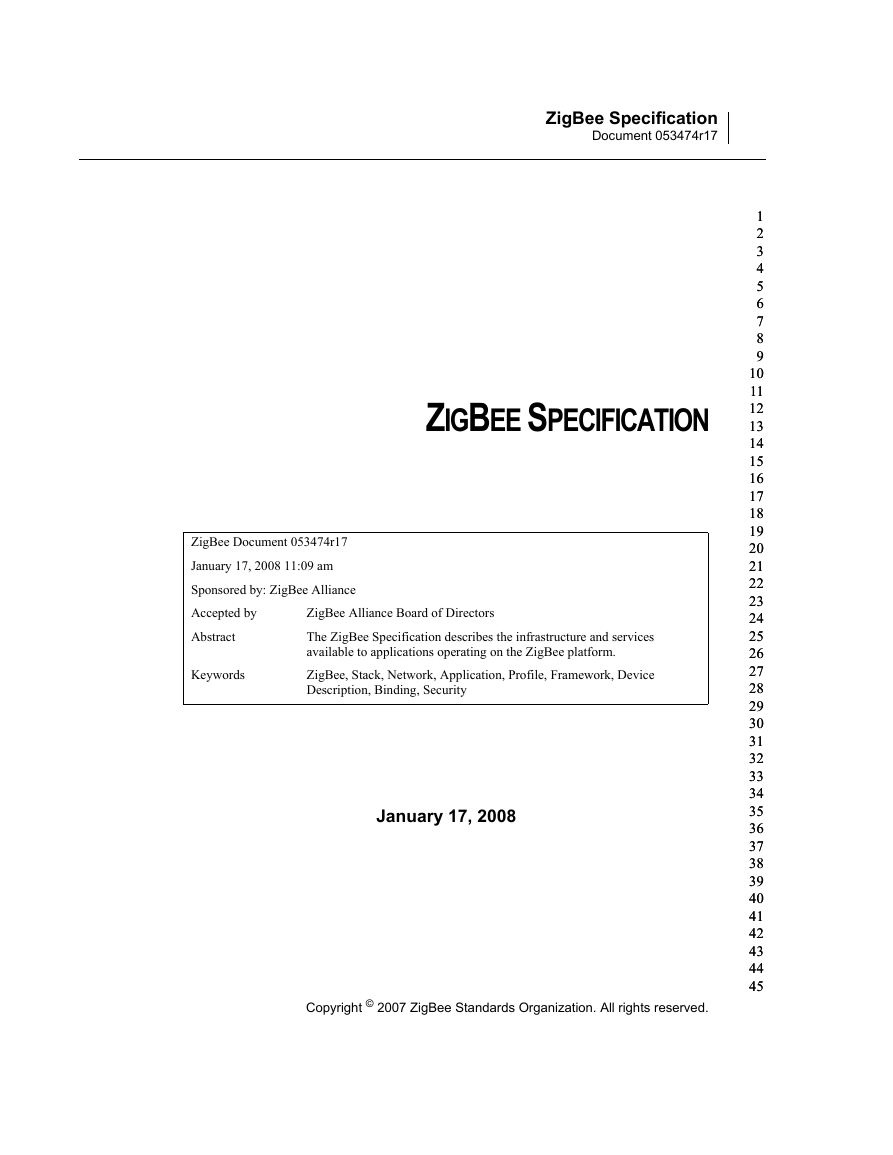



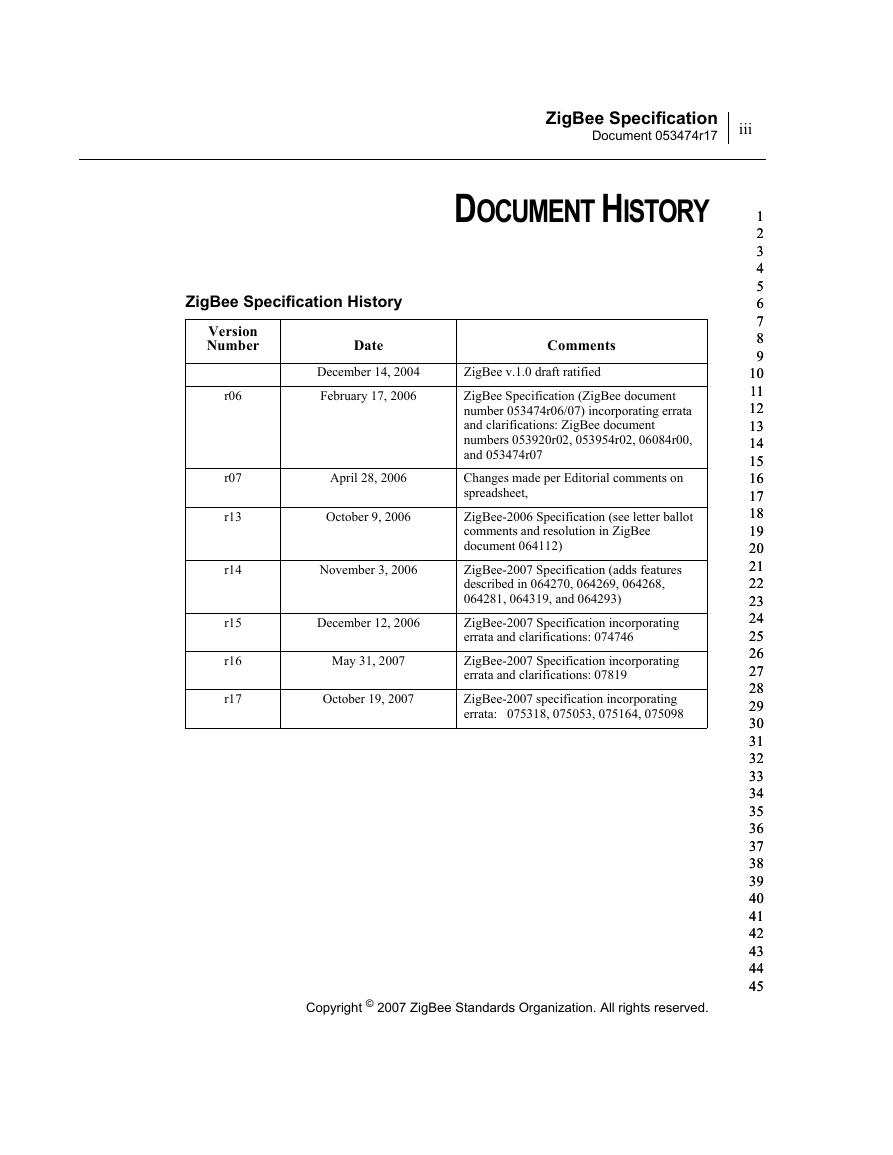
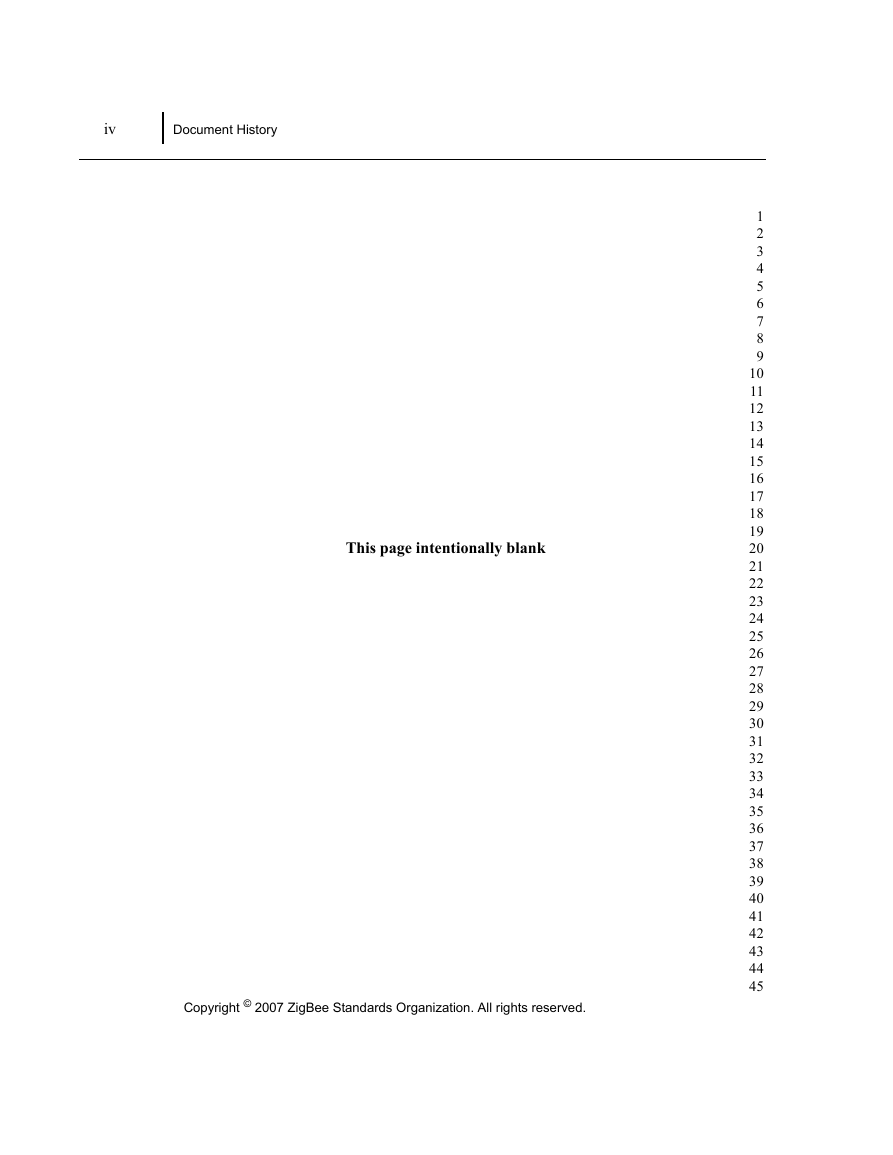
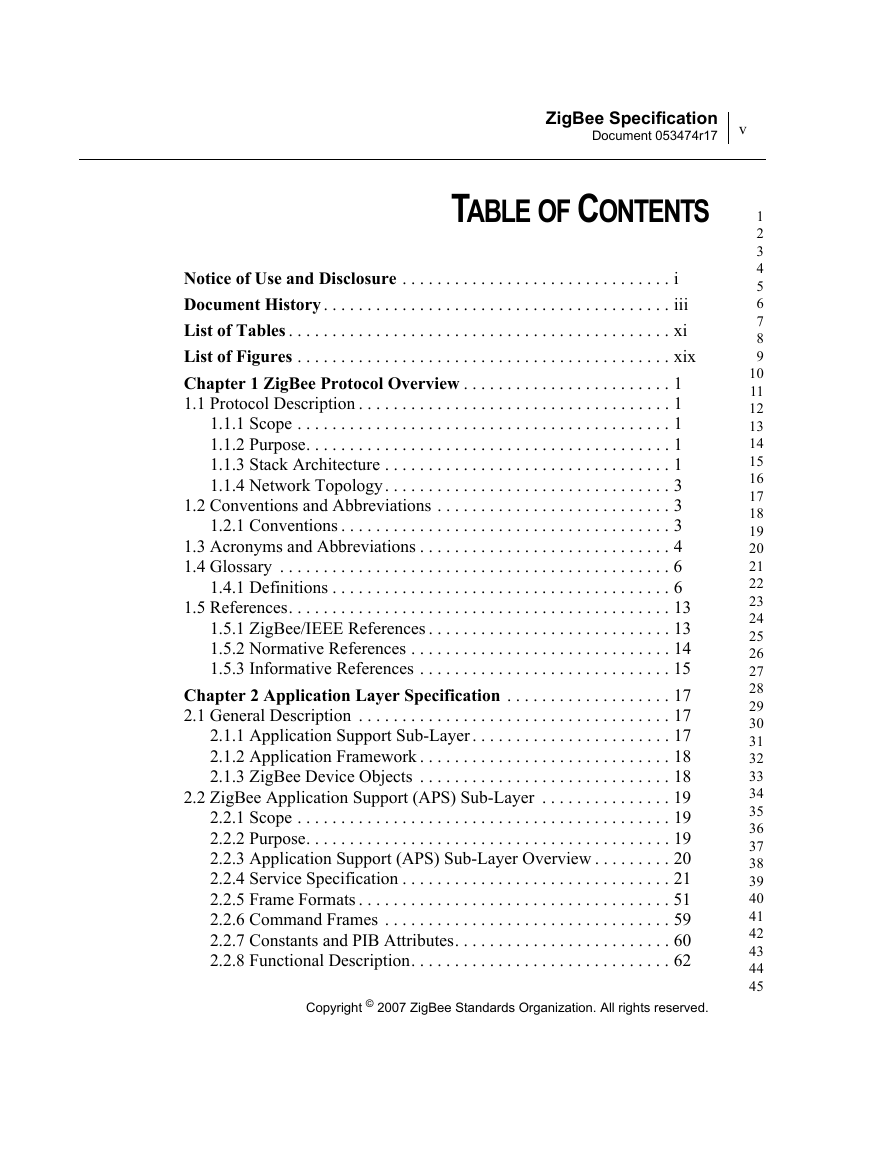
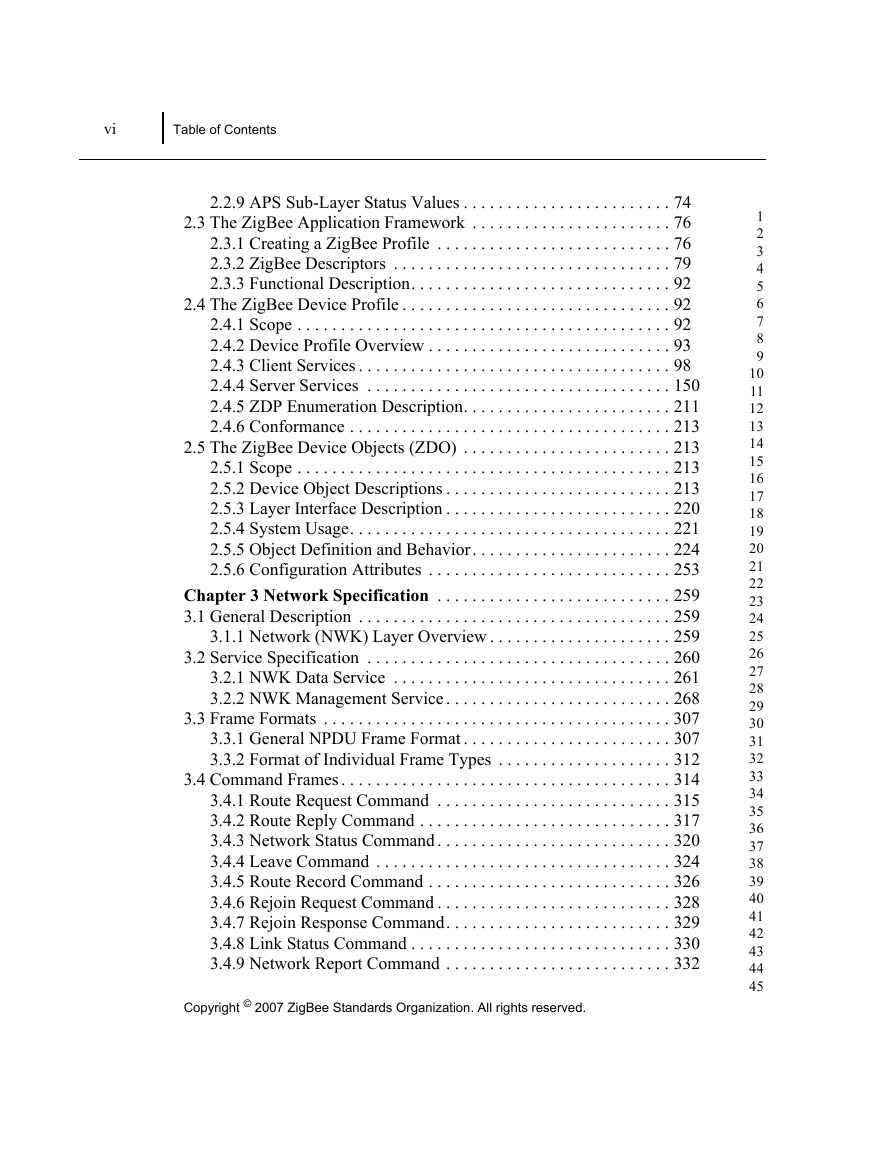








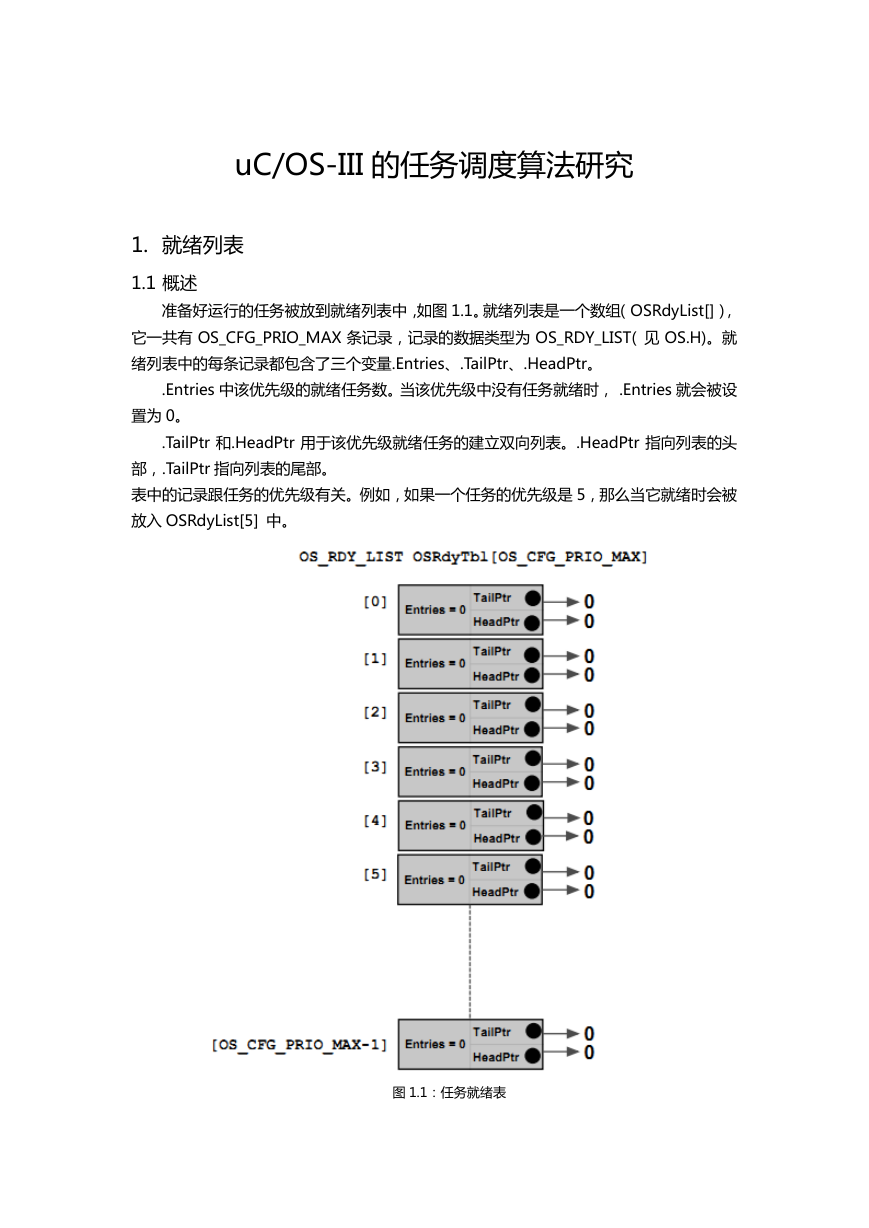 uCOS-III的任务调度算法研究.pdf
uCOS-III的任务调度算法研究.pdf STM32F103x8B_DS_CH_V10(7STM32中文数据手册).pdf
STM32F103x8B_DS_CH_V10(7STM32中文数据手册).pdf FX2N系列PLC培训教程.pdf
FX2N系列PLC培训教程.pdf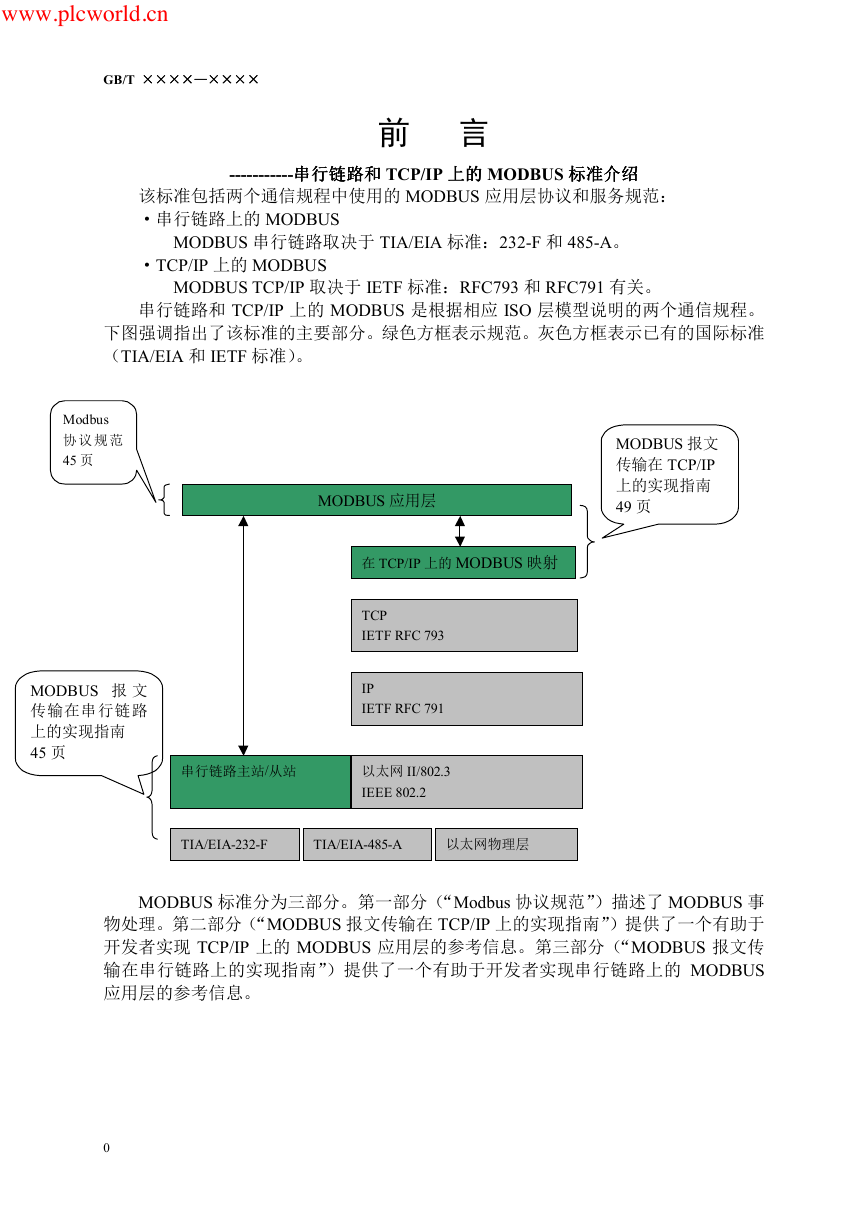 Modbus协议资料.pdf
Modbus协议资料.pdf WM8978中文资料(芯片资料).doc
WM8978中文资料(芯片资料).doc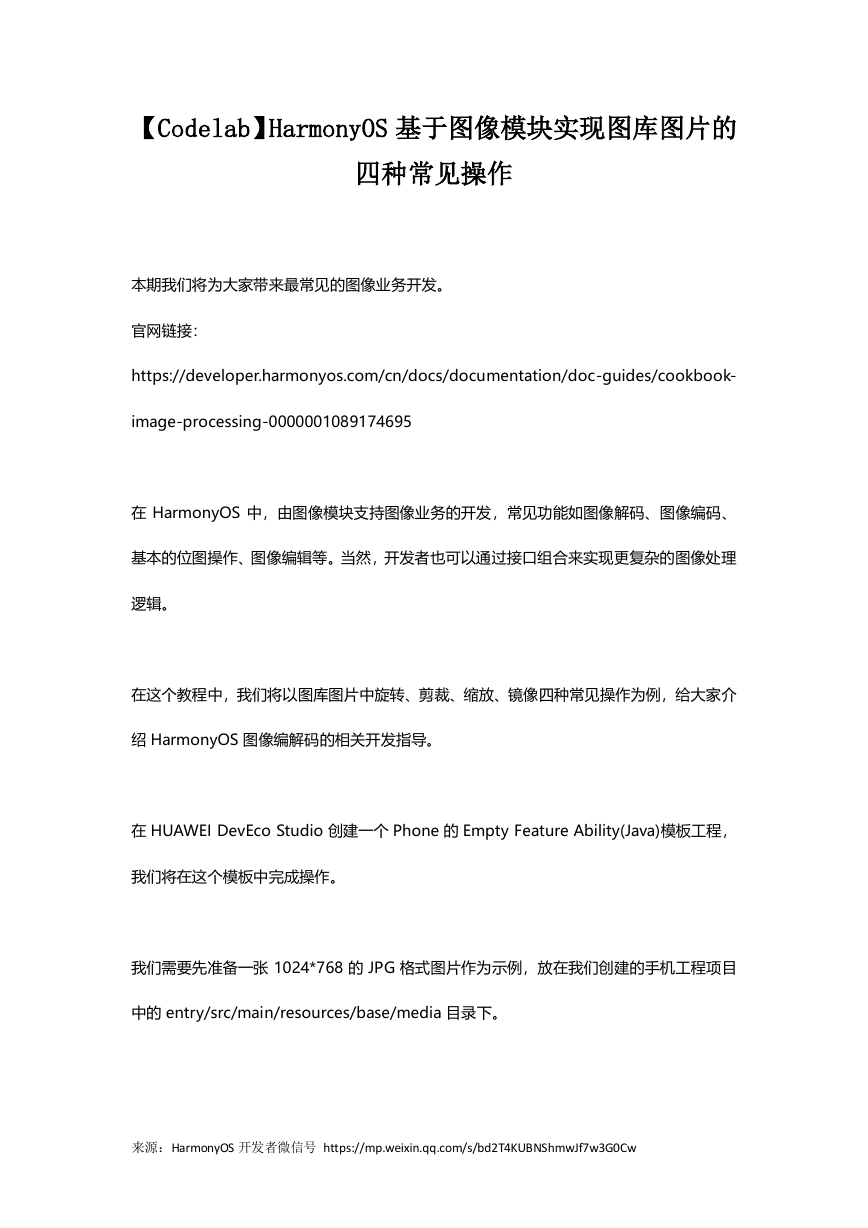 5-1.【Codelab】HarmonyOS基于图像模块实现图库图片的四种常见操作.pdf
5-1.【Codelab】HarmonyOS基于图像模块实现图库图片的四种常见操作.pdf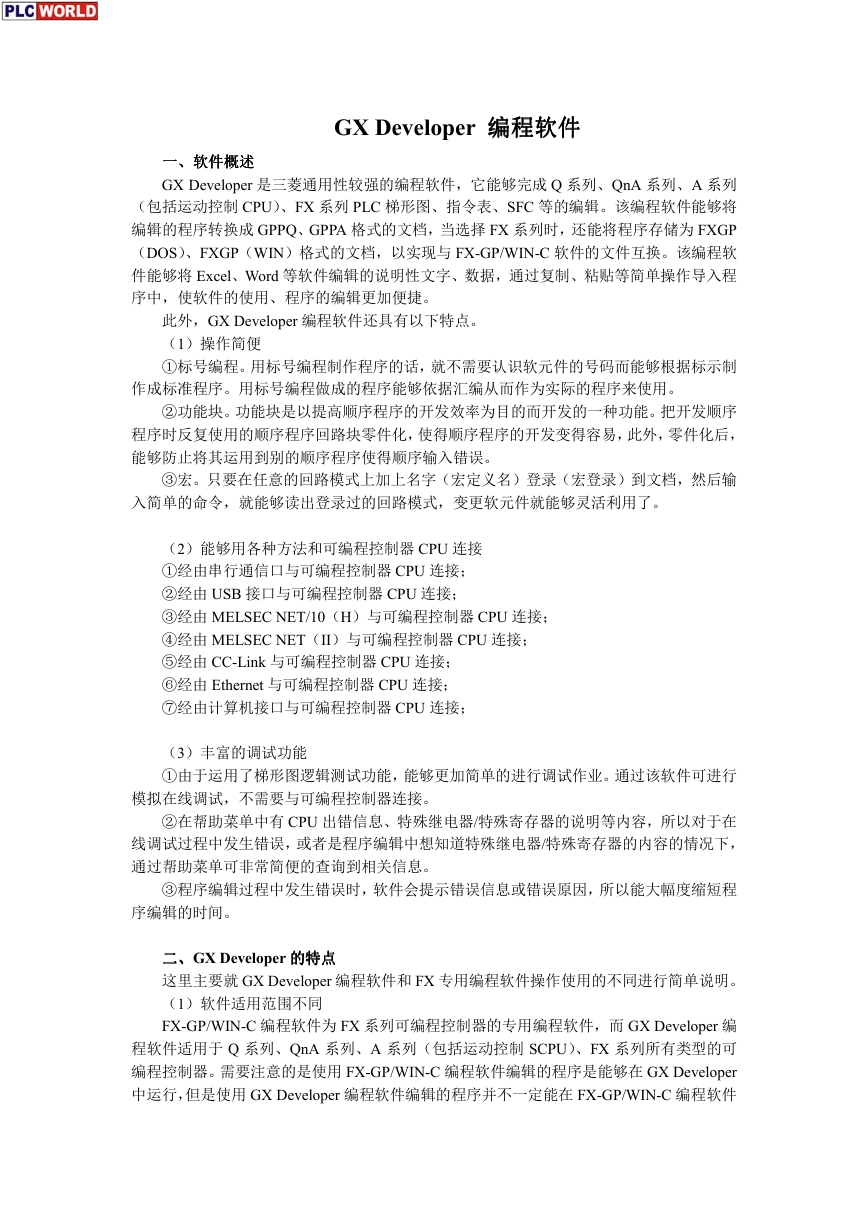 GX Developer 编程软件使用说明.pdf
GX Developer 编程软件使用说明.pdf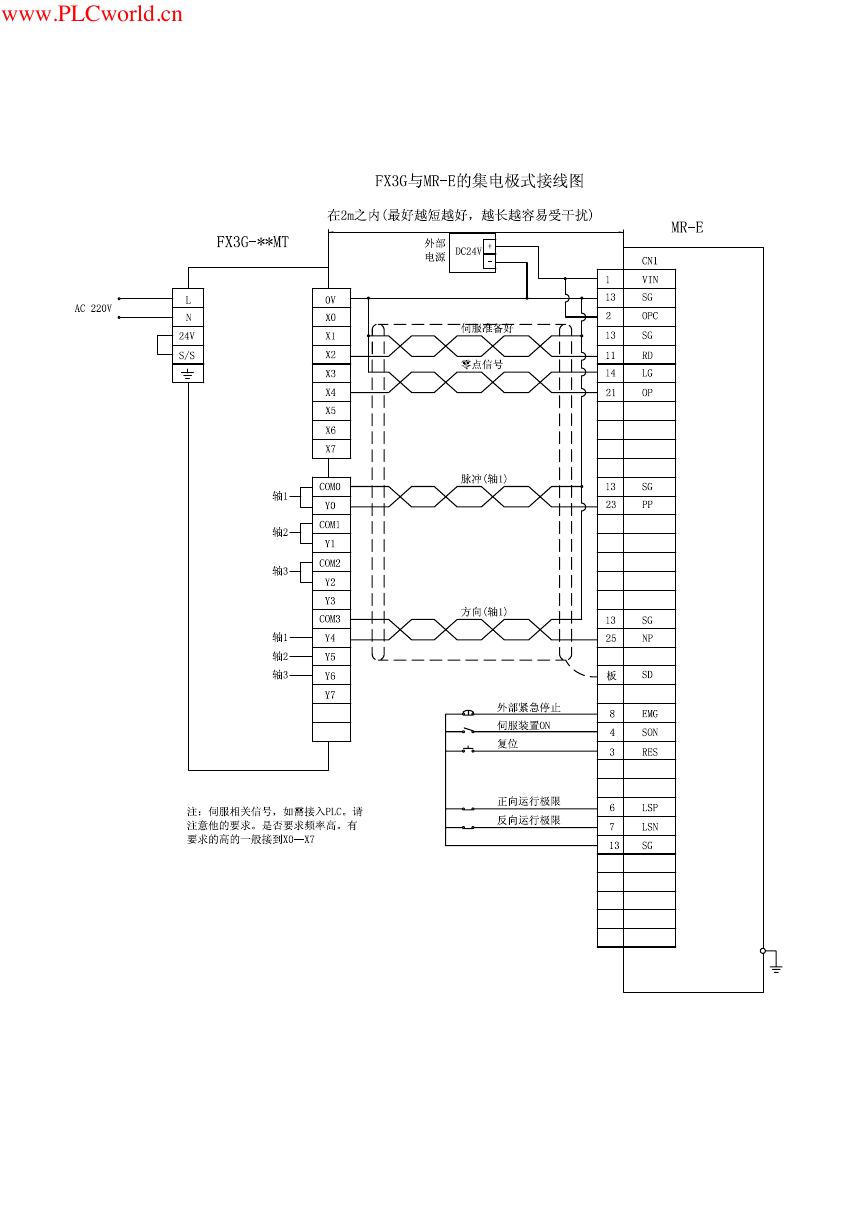 MR-E伺服与FX3G接线图.pdf
MR-E伺服与FX3G接线图.pdf ATK-NEO-6M GPS模块常见问题汇总_201400721.pdf
ATK-NEO-6M GPS模块常见问题汇总_201400721.pdf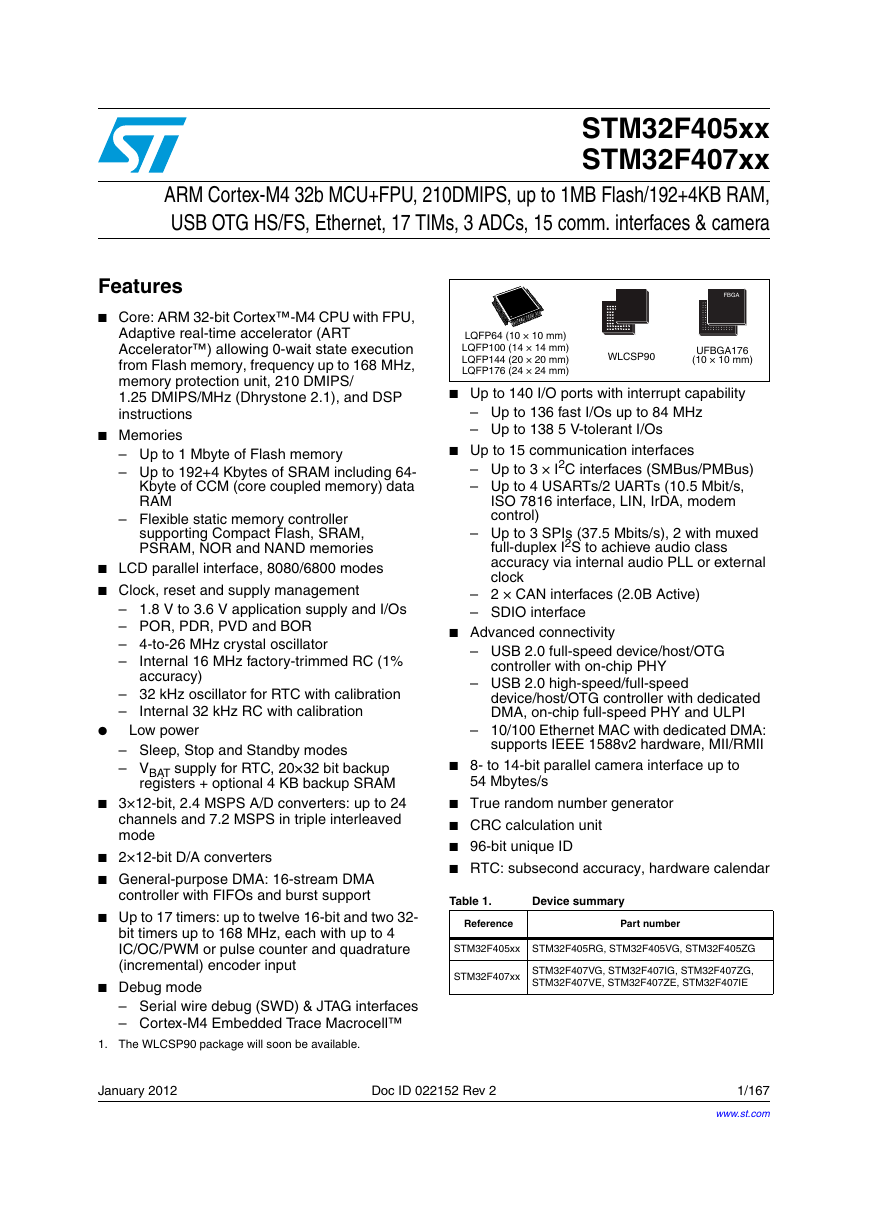 STM32F407ZGT6(芯片资料).pdf
STM32F407ZGT6(芯片资料).pdf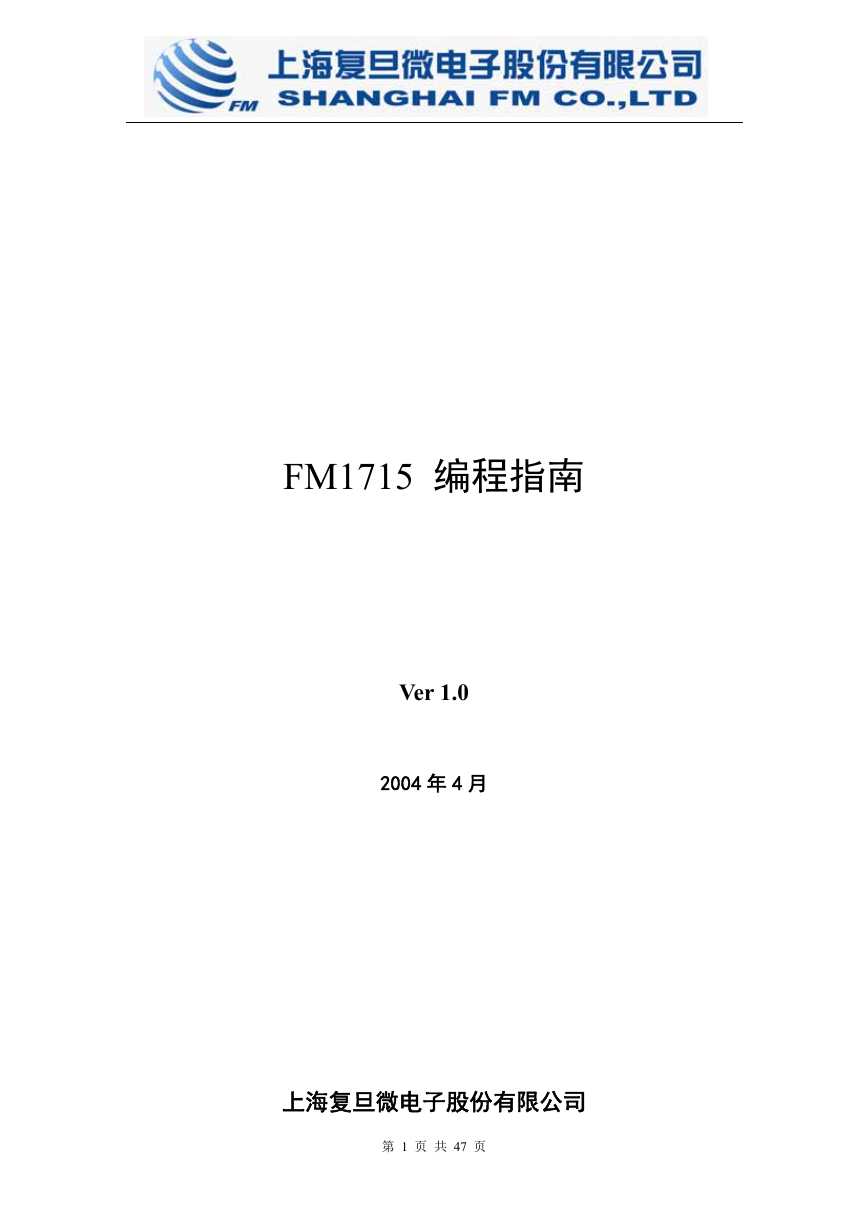 FM1715编程指南.pdf
FM1715编程指南.pdf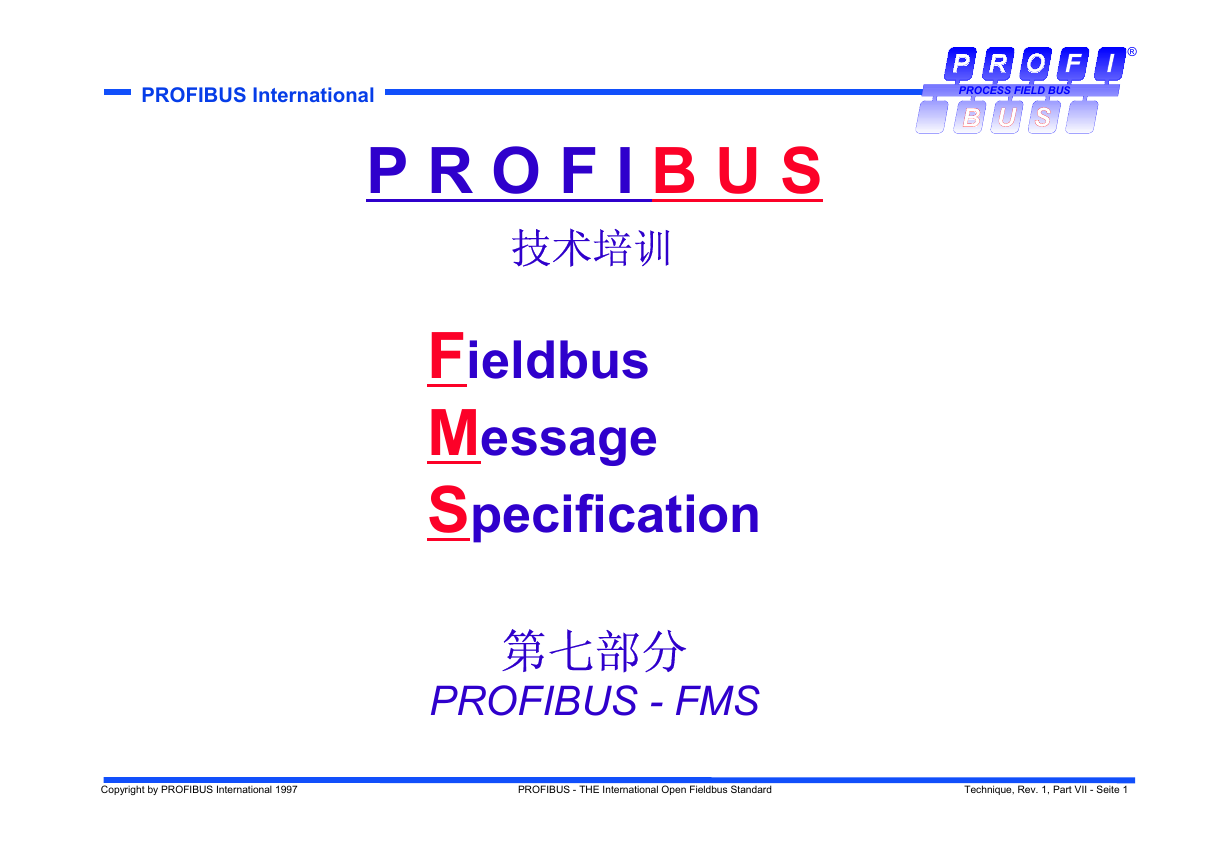 Profibus教程-7.PROFIBUS-FMS.pdf
Profibus教程-7.PROFIBUS-FMS.pdf